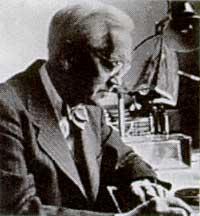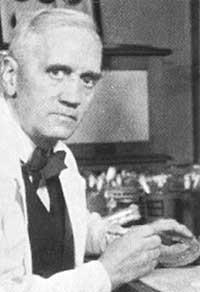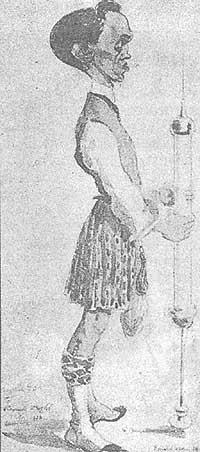Fleming: Doctor who found antibiotic casually
2001/07/01 Astobiza, Amaia Iturria: Elhuyar aldizkaria
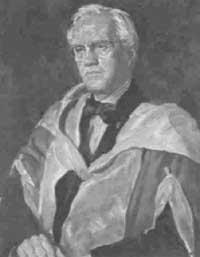
Alexander Fleming was born in western Scotland, in a small town in Ayrshire County. He studied at the Medical School of the Hospital Santa Maria in London and in 1906 he graduated. After completing his studies he continued in the hospital and, above all, he carried out research on bacteriology. Apart from the time of military service, he spent every year in the hospital.
When World War I broke out, he left the hospital and worked as a doctor of the royal army. There he discovered that by cleaning the wounds of soldiers with antiseptic the natural defenses of the body were damaged and it was also very difficult to kill the internal bacteria. Therefore, its main objective was to find substances that killed bacteria and did not damage human tissues. In addition, he invented new methods to perform blood transfusions in the years of the war.
At the end of the war he returned to the Hospital de Santa María to investigate. In 1928 he found penicillin, an antibiotic extracted from mold Penicillium notatum. The incidences of the discovery are really surprising.
Antibiotic found casually
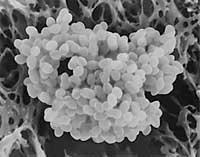
When working in the laboratory, Fleming was not at all tidy. One day diseases such as hives, abscesses, pneumonia, septicemia, etc. Petri's staphylococcal bacteria placed it in a box and left it unconsciously open. Shortly afterwards, when she realized that she was open, she covered her. On this occasion, however, she forgot to get into the incubator. That same day he left the laboratory work and took a break of two weeks. At the turn of his vacation, Petri discovered that it was covered with obscene boxes and that around the yellow-green mold there was a lighter color bacterial culture. What happened?
Fleming came to the conclusion that something inhibited the growth of the bacteria. But what? And how? On the ground floor, in the mycology laboratory, they worked with a fungus called Penicillium notatum, which apparently saw the window open and decided to travel to the Fleming laboratory. In the laboratory, he went directly to the Petri box and there he stood, in the center of the box, with great softness. If the box had been in the incubator, hot, the bacteria had already grown so that the fungus reaches it. On the other hand, if it had made the temperature corresponding to the summer season, the same ambient temperature would be enough for the bacteria to grow.
But Fleming left the box on the laboratory table and, in addition, for nine days it was cold in London that was not usual for the summer. For all this, when the fungus entered through the window, the bacteria had not yet grown. Then, when the temperature recovered, the staphylococcus began to grow, while by then the bacterium was in the other mold to kill it, so it did not grow what Fleming expected before going on vacation.
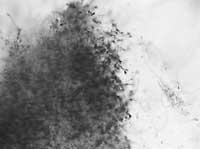
Therefore, it seems that the discovery of penicillin, more than Fleming himself, is due to that chain of casualties. However, to achieve a new marketing penicillin, scientists needed something more than chance.
Purification of penicillin
Apparently, Fleming was not able to purify penicillin. In addition, a few years after finding penicillin, seeing that it did not achieve good results, he abandoned the research of antibiotics and decided to address other topics.
In 1939, a group of scientists from the University of Oxford had the opportunity to analyze a sample of mold obtained by Fleming. Among its members were Australian physiologist Howard Florey and German chemist Ernst Boris Chain, among others. The main objective was to identify and isolate active substances from molds capable of killing bacteria. Florey's team chose the spore Fleming Penicillium notatum to initiate their investigations.
In a short time, the members of the group succeeded in purifying penicillin and, with the antibiotic obtained, carried out the following experiment: first the bacterium was injected into the mice (which Fleming administered to them by the mouth) and then the mice contaminated with penicillin were treated. With the results obtained, it was shown that penicillin was able to cure numerous infections.
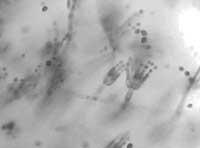
All of a sudden, many hitherto fatal infections could be cured: syphilis, gonococia, diphtheria, scarlet fever, wound infections, and other birth infections. During World War II, many soldiers were able to return home thanks to penicillin.
From then on, the scientists who participated in the investigation of penicillin and its use only knew fame and glory. In 1944, Fleming and Florey were visited. In 1945, both and chemist Chain were awarded the Nobel Prize in Medicine and Physiology.
Alexander Fleming died of a heart attack on March 11, 1955. Everyone wept and was buried in the crypt of St. Paul's Cathedral in London, as the national hero.

Gai honi buruzko eduki gehiago
Elhuyarrek garatutako teknologia



